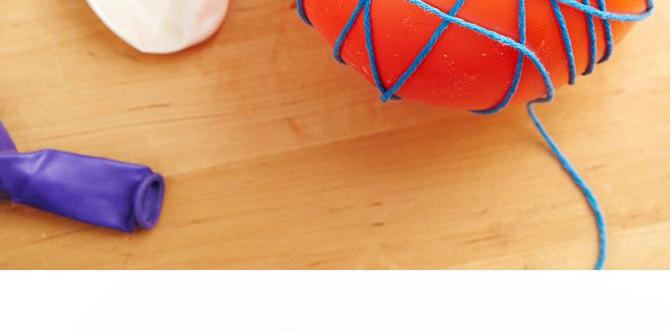Quick Summary: Facing angled nail shots is frustrating, but fixable! This guide helps you identify why nails bend in your workpiece and provides easy-to-follow steps to correct your nail gun technique, adjust settings, and ensure straight, solid fastening every time.
There’s nothing quite like the satisfaction of a woodworking project coming together perfectly. But then you hit a snag – literally! You’re driving nails, and instead of going in straight, they’re angling off, poking out at weird directions, or even bending completely. It’s a common issue, and it can make even the simplest DIY job feel like a major headache. Don’t worry, though! Angled nail shots are usually caused by a few simple, fixable things. With a few adjustments and a little practice, you’ll be driving nails straight and true in no time.
In this guide, we’ll walk you through exactly why this happens and, more importantly, how to fix it. We’ll cover everything from your nail gun’s settings to your technique. Get ready to say goodbye to frustratingangled fasteners and hello to clean, professional-looking work!
Table of Contents
Understanding Why Nails Go Angled
Before we can fix angled nail shots, it’s important to understand what’s causing them. Think of your nail gun as an extension of your hand – its behavior is often a direct result of how we’re using it or how it’s set up. There are several common culprits, and often, a combination of them can be at play. Identifying the root cause is the first step to achieving those perfectly straight nails you’re after.
Let’s break down the most frequent reasons nails decide to take a detour. By understanding these, you’re already halfway to solving the problem. We’ll explore issues with the nail gun itself, the materials you’re working with, and your own technique.
Common Causes of Angled Nail Shots
- Improper Nail Gun Angle: This is perhaps the most straightforward reason. If the nail gun isn’t held flush and perpendicular to the surface, the nail will naturally follow that angle.
- Incorrect Depth Setting: Too much pressure or a depth setting that’s too high can cause the gun to kick back or the nail to deflect when it hits harder material.
- Material Density and Hardness: Driving nails into very hard woods, knots, or dense composite materials can cause them to bend or deflect. Softer materials are more forgiving.
- Nail Gun Malfunction: Sometimes, a sticky firing pin, a damaged driver blade, or issues with the air pressure can lead to inconsistent nail driving.
- Incorrect Nail Size/Type: Using nails that are too long for the material thickness, or nails not designed for the specific gun, can cause problems.
- Operator Technique (Too much force/jerk): Applying too much downward force or jerking the gun as you fire can also push the nail off course.
- Obstructions: Hitting a knot, a previous nail, or even a hidden screw can cause the driven nail to bend.
Troubleshooting Angled Nail Shots: A Step-by-Step Approach
Now that we know the potential issues, let’s get down to fixing them. This structured approach will help you systematically identify and resolve the problem, ensuring your projects move forward smoothly.
Step 1: Check Your Nail Gun Angle
This is the easiest fix, but it’s often overlooked. For a nail to go in straight, the nose of your nail gun needs to be perfectly flat against the surface you’re fastening into. It’s like trying to hammer a nail straight – if you hit it from an angle, the nail won’t go through straight.
Actionable Tip:
- Hold the nail gun firmly against the workpiece, making sure the entire nose piece is in contact with the surface.
- Visualize a 90-degree angle between the nail gun and the material.
- Practice on a scrap piece of wood. Inhale, square up, exhale, and fire. This mindful approach can make a big difference.
Step 2: Proper Depth and Air Pressure Settings
Your nail gun’s depth adjustment controls how far the nail is driven into the material. If this setting is too aggressive, or if your air pressure is too high, the nail can be driven with excessive force, leading to deflection, especially if it encounters resistance.
Depth Adjustment:
- Most nail guns have a dial or lever near the nose for depth adjustment.
- Start with a moderate setting. If the nail isn’t sinking enough, increase the depth slightly. If it’s consistently bending or over-driving, reduce the depth.
- Always test on a scrap piece of the same material you’re using for your project.
Air Pressure:
- The required air pressure varies depending on the nail gun, the type of nail, and the material. Refer to your nail gun’s manual for recommended PSI (pounds per square inch) ranges.
- A good starting point for pine or fir is typically around 70-90 PSI. For hardwoods, you might need to increase it slightly, but be cautious not to overdo it.
- Too much pressure can create a strong recoil, causing you to lose contact or angle the gun as you fire, leading to angled shots.
- You can learn more about optimal air pressure settings for various nailer types from resources like Family Handyman’s guide to air compressor settings.
Step 3: Evaluate Your Material
Not all wood is created equal! Driving nails into different types of wood or materials presents unique challenges. Hardwoods, dense composites, or pieces with significant knots require a different approach than softwoods.
Dealing with Tough Materials:
- Hardwoods: For oak, maple, or other dense hardwoods, you might need slightly higher air pressure. Ensure your nails are sharp and appropriately sized. Sometimes, pre-drilling a pilot hole can prevent bending, especially for longer nails or near edges.
- Knots: Hitting a knot is a prime cause of angled nails. If you can, avoid aiming for knots. If it’s unavoidable, try to reduce the depth setting slightly and ensure your gun is perfectly perpendicular. You might need to drive the nail in stages.
- Composite Materials/Plywood: Some engineered woods and composites can be very dense. Adhere to the recommended PSI and depth settings. Watch for delamination, where the nail can cause layers to separate.
Table: Material Impact on Nail Driving
| Material Type | Typical Challenges | Recommended Adjustments |
|---|---|---|
| Softwoods (Pine, Fir) | Minimal resistance, generally easy to drive. | Standard PSI (70-90), moderate depth setting. |
| Hardwoods (Oak, Maple, Cherry) | High resistance, potential for bending or splitting. | Slightly higher PSI (80-100), ensure sharp nails, consider pilot hole for long nails. |
| Knots | Very dense, can deflect nails. | Reduce depth slightly, ensure perfect perpendicularity, drive in stages if possible. |
| Plywood/Composite Boards | Dense, potential for delamination. | Adhere to manufacturer specs, watch for edge splitting. |
| Existing Nails/Screws | Hard obstruction, will definitely deflect or bend the new nail. | Locate and avoid obstructions by repositioning the nail. |
Step 4: Inspect Your Nail Gun and Nails
Sometimes, the problem isn’t you or the wood; it’s the tool or the fasteners you’re using. A well-maintained nail gun is crucial for consistent performance.
Nail Gun Maintenance:
- Driver Blade: The metal piece that strikes the nail head can become worn or damaged over time. Check for any nicks, bends, or excessive wear. A damaged driver blade can’t deliver a clean, straight strike.
- Firing Pin: Ensure the firing pin moves freely. If it’s sticking, it won’t strike the nail consistently or squarely. A drop of appropriate lubricant might help.
- Nose Piece: Check for any debris lodged in the nose or magazine that might interfere with the nail feeding correctly.
- Magazine: Make sure the nails are feeding smoothly from the magazine. If the nails are binding or not aligning correctly, it can lead to angled shots.
Nail Quality and Type:
- Always use the correct type and size of nails for your specific nail gun model. Using the wrong nails (too short, too long, wrong gauge) can cause feeding issues and driving problems.
- Ensure you’re using high-quality nails. Cheaper nails can be made with softer metal that bends more easily, or they might have inconsistent head sizes, leading to misfires or poor seating.
- Check for bent nails in the magazine. If a nail is already bent before it’s fired, it’s likely to go in crooked.
If you suspect a worn driver blade or a persistent mechanical issue, it might be time for a repair or even consider a replacement. For general maintenance, understanding how to care for your pneumatic tools is key. Resources like Popular Mechanics’ guide to the best nail guns often touch on maintenance best practices.
Step 5: Refine Your Operator Technique
Your technique plays a vital role in how straight your nails drive. Even with the right settings and a good nail gun, poor handling can lead to angled shots.
Key Technique Tips:
- Firm, Even Pressure: Apply steady, downward pressure with the nail gun against the surface. Avoid rocking the gun or applying pressure unevenly. This ensures the gun stays perpendicular.
- Controlled Firing: Don’t yank the trigger. A smooth, controlled press of the trigger is best. A sudden jerk can move the gun just as the nail is being driven.
- Grip and Stance: A firm grip helps stabilize the tool. A balanced stance provides a stable platform for your body, which in turn helps stabilize the tool.
- Follow Through (Momentarily): Keep the gun pressed against the surface for a brief moment after firing. This is especially helpful in softer woods or when driving longer nails, preventing the nail from bending as the nail gun retracts.
- “Bump Fire” vs. “Sequential Fire”: If your gun has a “bump fire” mode (where holding the trigger and tapping the nose drives multiple nails), be extra careful with your angle and pressure. Sequential fire mode (where you must release and re-press the trigger for each nail) offers more control over placement and angle.
Step 6: Addressing Obstructions and Pre-Drilling
Sometimes, everything seems right, but the nail still bends. This is often due to hitting something solid within the material itself.
Identifying and Avoiding Obstructions:
- Listen and Feel: Pay attention to the sound and feel when you drive a nail. A sudden change in resistance can indicate a knot or hidden obstruction.
- Visual Inspection: Before nailing, look for visible knots, grain patterns, or areas that appear denser.
- Repositioning: If you encounter resistance that bends the nail, pull the trigger again (if possible, without driving a second nail), retract the gun, and try a slightly different spot nearby.
When to Pre-Drill:
Pre-drilling a pilot hole is an excellent strategy when you anticipate problems or when working with particularly difficult materials. It essentially creates a channel for the nail to follow, significantly reducing the chance of deflection.
- Near Edges: Driving nails too close to the edge of a board, especially hardwoods, can cause splitting or deflection. A pilot hole slightly smaller than the nail shank will prevent this.
- Hardwoods: As mentioned, hardwoods offer more resistance. A pilot hole makes driving the nail much easier and straighter.
- Long Nails: For longer nails (e.g., 2.5 inches and up) in dense material, a pilot hole provides a clear path.
- Recycled/Reclaimed Wood: Pre-drilling is often a wise choice as you never know what hidden nails or debris might be lurking inside.
For consistent results, especially when dealing with materials prone to splitting or splitting, consulting resources on proper woodworking techniques can be invaluable. Tools like the Wood Magazine’s drill bit guide can help you choose the right bit for pilot holes.
Advanced Tips for Flawless Nailing
Once you’ve mastered the basics, a few extra tricks and considerations can elevate your nailing game and help you tackle even more challenging projects.
Using the Right Nailer for the Job
Different nail guns are designed for different tasks. Using the wrong type of gun can lead to frustration and angled shots. Consider the project and the fasteners required.
- Finish Nailers (15-16 gauge): Ideal for trim work, cabinetry, and securing smaller moldings where minimal hole size is desired.
- Brad Nailers (18 gauge): Used for delicate trim, small projects, and tasks where you want the nail to be almost invisible.
- Framing Nailers (2-3.5 inch nails): Designed for heavy-duty construction, framing walls, decks, and fences. They use larger, thicker nails.
- Roofing Nailers: Specialized for attaching shingles.
- Cap Nailers: Used to secure house wrap or roofing underlayment with a plastic cap to prevent blow-out.
The power and nail size compatibility are key. A framing nailer might drive a large nail straight through a knot, but it would wreck fine trim. Conversely, a brad nailer won’t be effective for structural framing.
Understanding Nail Collation Types
The way nails are held together in strips or coils is called collation. The angle of the collation can sometimes influence how the nail gun sits against the work.
- Strip Collation (Flat): Nails are held in a straight line, usually glued or papered. These are common in framing and finish nailers.
- Coil Collation (Rolled): Nails are held in a circular coil, typically wired together. Common in roofing and siding nailers.
- Angled Collation: This is a very common type for nail guns designed to get into tighter corners. The nails are collated at an angle (e.g., 20, 25, or 30 degrees).
When using an angled nailer, it’s crucial that the collation angle matches the angle of the gun’s nose. If you use a 20-degree nailer with 30-degree nails, or vice-versa, you’ll encounter feeding issues and potentially angled shots, as the nail won’t align properly in the magazine and driver mechanism.
Environmental Factors
While less common, extreme temperatures can sometimes affect the performance of pneumatic tools and even the materials themselves.
- Cold Weather: In very cold conditions, seals in pneumatic tools can become less pliable, and lubricants might thicken, potentially affecting tool function. Air lines can also retain moisture, leading to ice formation and jams.
- Humidity: High humidity can lead to condensation in your air tank and lines, which can corrode your tool over time and cause the nails to rust in the magazine.
If you consistently work in challenging environments, investing in a good air-dryer for your compressor and keeping your tools clean and lubricated becomes even more important. You can find valuable information on tool maintenance in publications like This Old House’s guides on tool maintenance.
When Angled Shots Mean a Serious Problem
While most angled nail shots are a result of technique or settings, in rare cases, it can indicate a more significant issue with the nail gun itself. If you’ve tried all the troubleshooting steps and are still experiencing consistent angled shots, it might be time to consider the internal workings of the nailer.
- Worn Driver Blade Assembly: The piece that strikes the nail is a critical component. If it’s bent, chipped, or





